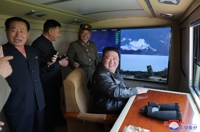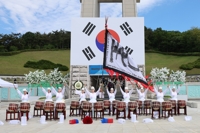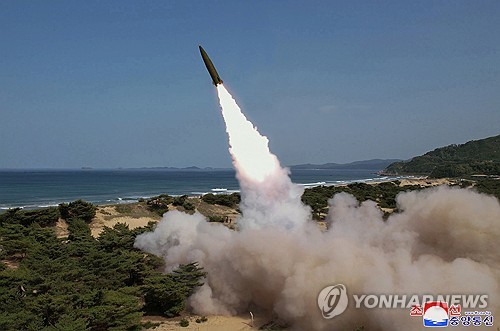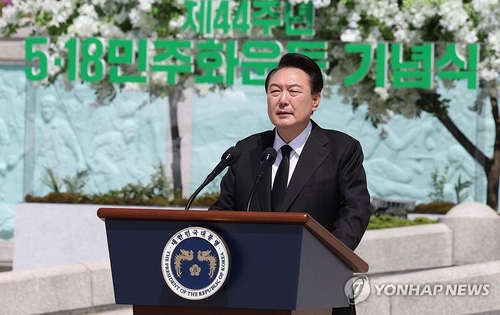(5th LD) N. Korea test-fires modified Musudan missile: JCS
(ATTN: UPDATES with JCS's revision on missile type in paras 1-4)
By Choi Kyong-ae
SEOUL, Feb. 12 (Yonhap) -- North Korea on Sunday fired an intermediate-range ballistic missile into the East Sea in an apparent provocation to boast its military readiness and test the response from the new Donald Trump administration, the South Korean military said.
"The missile appears to be a modified intermediate-range Musudan ballistic missile possibly equipped with a solid fuel engine, not a medium-range Rodong missile," Seoul's Joint Chiefs of Staff (JCS) said in another press briefing Sunday.
Nearly 10 hours after the missile launch, the JCS revised an earlier assessment that the missile was probably a medium-range Rodong or a modified version of the missile.
Seoul and Washington have jointly analyzed the U.S. satellite data related to Sunday's missile launch to come up with the revised result, a JCS official said, adding "more analysis is necessary to see if the missile launch was successful or not."
The missile was launched at around 7:55 a.m. at a steep angle from Banghyon air base in the western province of North Pyongan Province. It reached a height of 550 kilometers and then flew about 500 km before splashing into its eastern sea. Its flight distance indicates it is not an intercontinental ballistic missile (ICBM), according to the JCS.
It was the first test-firing of a North Korean missile since Trump became U.S. president on Jan. 20., and the country's first major provocation in 2017.
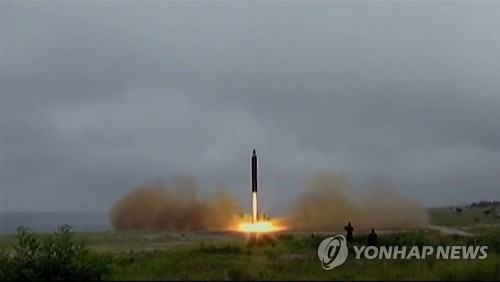
This photo first released on Jan. 24, 2017, by North Korea's state-run news organization, KCNA, shows a Musudan intermediate-range ballistic missile being test-fired from a launcher in North Korea on June 22, 2016. (For Use Only in the Republic of Korea. No Redistribution) (Yonhap)
South Korea, the U.S. and Japan strongly condemned North Korea's missile test, issuing a statement or holding a press conference to deliver their messages against the North's continued provocations.
"The missile launch is an explicit and clear violation of the United Nations Security Council resolutions banning tests (that can contribute to the advancement of nuclear weapons delivery capability). It is aimed at drawing global attention to the North by boasting its nuclear and missile capabilities," the JCS said in a statement.
"This demonstrates the irrational nature of the Kim Jong-un regime that has been fanatically obsessed with its nuclear and missile development. Pyongyang's repeated provocations would only strengthen the international community's resolve to achieve the North's denuclearization," the foreign ministry said in a statement.
In an unscheduled joint press conference in Florida on Friday (U.S. time), U.S. President Donald Trump said the U.S. stands behind Japan "100 percent." Japanese Prime Minister Shinzo Abe denounced the North's missile launch as "absolutely intolerable" and urged the communist state to comply with all U.N. Security Council resolutions.
The Banghyon base is the same place where North Korea test-fired Musudan missiles on Oct. 15 and 20. Last year, the North tested a total of eight Musudan missiles believed to be capable of reaching the U.S. territory of Guam.
In the one "successful" Musudan launch to date, the missile flew some 400 km, well short of its maximum range, but the flight distance was because the North fired the missile at a high angle in order to avoid breaching Japan's airspace.
Back then, the Pentagon confirmed after the launch that the missile reached an altitude exceeding 1,000 kilometers.
North Korean leader Kim said in his annual New Year's address that the country's preparations for launching an ICBM have "reached the final stage." The remark was seen as an apparent threat that Pyongyang was close to acquiring the know-how to strike the continental United States.
In response to the ICBM threat, Trump pledged last month to stop the North from mastering such ICBM capabilities, saying that the North's development of a nuclear missile capable of striking the U.S. "won't happen," though he didn't say how he would prevent it.
There were earlier reports that the North had placed two unidentified missiles on mobile launchers for apparent test-firing.
Meanwhile, the Japanese government confirmed the North's missile test and South Korea's presidential office called a national security meeting.
Japan's Chief Cabinet Secretary Yoshihide Suga reportedly said the missile launched by Pyongyang didn't hit Japanese waters.
South Korea's Acting President and Prime Minister Hwang Kyo-ahn said at a meeting convened in Seoul that the country will make a "corresponding" response to punish Pyongyang for its latest missile launch in tandem with the international community.
kyongae.choi@yna.co.kr
(END)
-
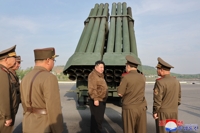 NIS looking into N. Korea's suspected provision of weapons to Russia
NIS looking into N. Korea's suspected provision of weapons to Russia -
 Thailand seeks extradition of S. Korean suspect in Pattaya murder
Thailand seeks extradition of S. Korean suspect in Pattaya murder -
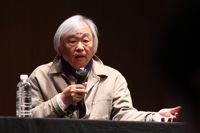 Paik Kun-woo's 1st Mozart album: a return to musical roots
Paik Kun-woo's 1st Mozart album: a return to musical roots -
 N. Korea's Kim, daughter attend ceremony for new street in Pyongyang
N. Korea's Kim, daughter attend ceremony for new street in Pyongyang -
 Army chief to visit U.S. for talks with counterpart, land forces symposium
Army chief to visit U.S. for talks with counterpart, land forces symposium
-
 NIS looking into N. Korea's suspected provision of weapons to Russia
NIS looking into N. Korea's suspected provision of weapons to Russia -
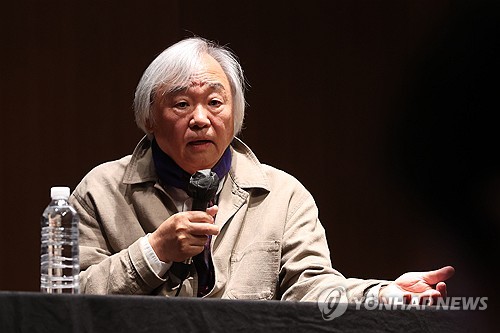 Paik Kun-woo's 1st Mozart album: a return to musical roots
Paik Kun-woo's 1st Mozart album: a return to musical roots -
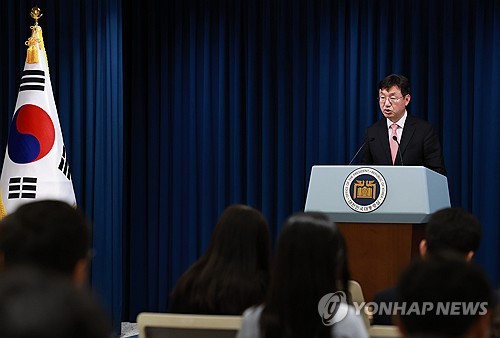 Yoon's office vows to firmly respond to unfair treatment of S. Korean companies amid Japan's pressure on Naver
Yoon's office vows to firmly respond to unfair treatment of S. Korean companies amid Japan's pressure on Naver -
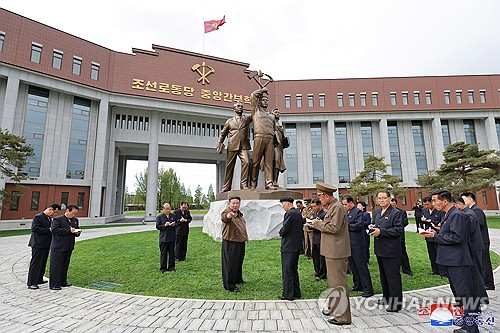 N.K leader visits newly built ruling party training school
N.K leader visits newly built ruling party training school -
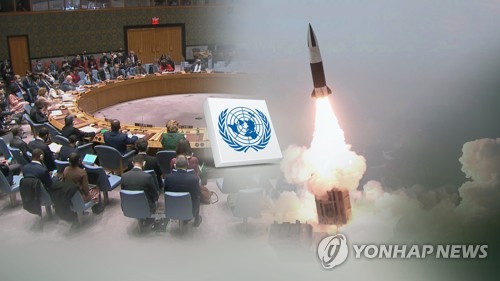 N. Korea slams U.N. members' sanctions enforcement as 'provocations'
N. Korea slams U.N. members' sanctions enforcement as 'provocations'
-
 NewJeans members submit petitions over court injunction in Hybe-ADOR conflict
NewJeans members submit petitions over court injunction in Hybe-ADOR conflict -
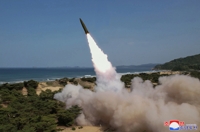 (2nd LD) N. Korea says it test-fired tactical ballistic missile with new guidance technology
(2nd LD) N. Korea says it test-fired tactical ballistic missile with new guidance technology -
 HRNK report sheds light on human rights abuse of N. Korean nuclear scientists
HRNK report sheds light on human rights abuse of N. Korean nuclear scientists -
 Top U.S. negotiator for defense cost sharing talks arrives in Seoul
Top U.S. negotiator for defense cost sharing talks arrives in Seoul -
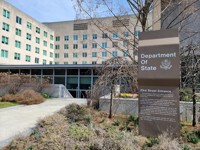 U.S. condemns N. Korea's missile launches as UNSC resolution violation
U.S. condemns N. Korea's missile launches as UNSC resolution violation















